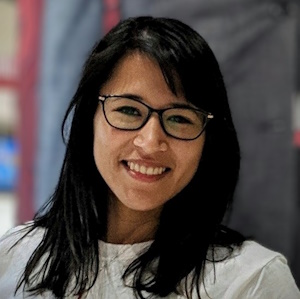Simpler method refines ultrapure diamond film fabrication for quantum and electronic applications

Gaby Clark
scientific editor

Robert Egan
associate editor

Diamond is one of the most prized materials in advanced technologies due to its unmatched hardness, ability to conduct heat and capacity to host quantum-friendly defects. The same qualities that make diamond useful also make it difficult to process.
Engineers and researchers who work with diamond for quantum sensors, power electronics or thermal management technologies need it in ultrathin, ultrasmooth layers. But traditional techniques, like laser cutting and polishing, often damage the material or create surface defects.
Ion implantation and lift-off is a way to separate a thin layer of diamond from a larger crystal by bombarding a diamond substrate with high-energy carbon ions, which penetrate to a specific depth below the surface. The process creates a buried layer in the diamond substrate where the crystalline lattice has been disrupted. That damaged layer effectively acts like a seam: Through high-temperature annealing, it turns into smooth graphite, allowing for the diamond layer above it to be lifted off in one uniform, ultrathin wafer.
A team of researchers at Rice University has developed a simpler and more effective way to achieve lift-off: instead of high-temperature annealing, they discovered that growing an extra epilayer of diamond atop the substrate after ion implantation is enough to turn the damaged layer graphite-like.
According to published in Advanced Functional Materials, the refined technique can bypass the high-temperature annealing and generates higher-purity diamond films than the original substrates. Moreover, the substrate sustains minimal damage in the process and can be reused, making the whole process resource-efficient and scalable.

"We found that diamond overgrowth converts the buried damage layer into a thin graphitic sheet, removing the need for energy鈥慼eavy annealing," said Xiang Zhang, assistant research professor of materials science and nanoengineering at Rice and a corresponding author on the study. "The resulting diamond film is purer and higher-quality than the original diamond, matching the electronic-grade quality."
According to Zhang, these ultrapure diamond films "could revolutionize electronics, enabling faster, more efficient devices, or serve as the foundation for quantum computers that solve problems beyond today's reach."
To grow a new layer of diamond on the substrate, the researchers used microwave plasma chemical vapor deposition, a method that deposits new diamond material onto the surface in perfect alignment with the underlying crystal. The researchers hypothesized that the conditions of the growth process itself were enough to drive the conversion of the buried damage layer into graphite, without the need for additional heating.
To confirm this theory, the team examined how the interfaces between the diamond substrate, the buried damage layer and the overgrown film evolved during diamond overgrowth using a combination of transmission electron microscopy, electron energy loss spectroscopy, Raman spectroscopy and photoluminescence mapping.
"By correlating atomic鈥憀evel imaging with spectroscopic signatures, we demonstrate that diamond overgrowth is sufficient to form a clean graphitic release layer, preserve substrate smoothness and yield electronic鈥慻rade diamond films, which is crucial for quantum technologies," Zhang said.
By simplifying production and boosting sustainability, the new method could enable the development of transformative diamond-based technologies.
More information: Xiang Zhang et al, Ion鈥怚mplantation, Epilayer Growth, and Lift鈥怬ff of High鈥怮uality Diamond Films, Advanced Functional Materials (2025).
Journal information: Advanced Functional Materials
Provided by Rice University


















